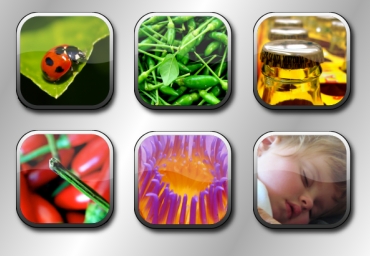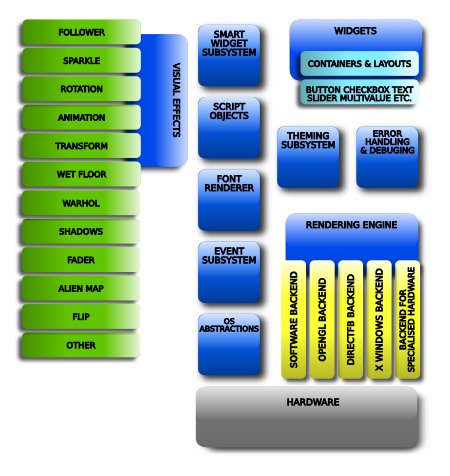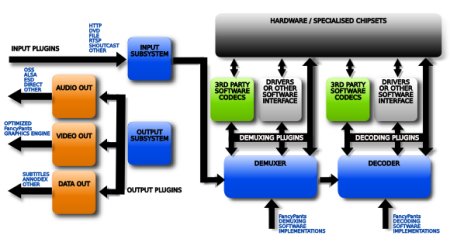Lightweight, embedded graphics framework rev’d
May 6, 2008 — by Eric Brown — from the LinuxDevices Archive — 14 views FST announced the launch of version 2.0 of its Linux-compatible FancyPants embedded graphics stack. The new “BlueJeans” release adds GUI development features including object-oriented scripting, custom video thumbs, and the ability to run multiple embedded applications simultaneously on the same… screen, according to the company.
FST announced the launch of version 2.0 of its Linux-compatible FancyPants embedded graphics stack. The new “BlueJeans” release adds GUI development features including object-oriented scripting, custom video thumbs, and the ability to run multiple embedded applications simultaneously on the same… screen, according to the company.
FST's FancyPants is a lightweight, embedded graphics framework similar to Qt Core, GTK, or the new disko framework from the directFB project. Primarily targeting mobile devices such as phones, it includes a software development kit (SDK) and optimized runtime libraries that support Linux, Symbian/UIQ, and Windows, among other embedded OSes. However, the company has recently “tightened its focus” on Linux, according to a recent email from company Marcom official Stan Ghys.

FancyPants 2.0's simultaneous real-time video (with rounded corners, no less)
Version 2.0 provides a variety of new effects and GUI features, says FST, as well as personalization features and “theme” layouts. Video support is the most notable improvement — video can now be displayed on any part of the UI, including wallpaper or a button, says the company. The previous version was said to run with a footprint of under 3MB, but the new version has reduced that to anywhere between 600KB to 2MB, says FST.
As with earlier versions, supported effects include soft shadows, screen and image transitions, fades and wipes, 32-bit alpha blending, animations, glitter, color manipulation, scaling, rotation, and 3D folds. The stack is designed for smartphones, set-top boxes, portable media players, rich Internet devices, in-car telematics and infotainment, kiosks, and home automation devices, says FST (formerly called Fluffy Spider Technologies). Processor support includes ARM9, ARM11, x86, PowerPC, and MIPS32 (NXP).

FancyPants Graphics architecture
Version 2.0 is split into three components, each listed below, with their typical install size:
- FancyPants Graphics (600KB) — Includes the rendering engine, as well as support for scripting, widgets, themes, and special effects (see diagram above).
- FancyPants CanvasServer (40-50KB) — This optional module manages display resources between applications, including compositing. CanvasServer enables multiple applications to run simultaneously onscreen, complete with a “seamless alpha blended user interface,” says FST (see image at top). Based on FST's partnership with virtualization vendor OKLabs, the technology can even display multiple applications from multiple CPUs and virtualized operating systems (OSes) on the same display with “a consistent look and feel,” claims the company.
- FancyPants Media (500KB to 1.5MB) — This audio/video subsystem interface is based on a plugin architecture that enables applications to use FancyPants native codecs, on-board hardware codecs, or third-party codecs. FancyPants Media provides a consistent API across different media types, says FST, thereby abstracting the handling of codecs (see diagram below)

FancyPants Media architecture
(Click to enlarge)
Other version 2.0 features are said to include:
- ScriptObjects — A new object-based scripting language supports the definition, placement, movement, size, shape, and other visual effects of “some” GUI elements via an external XML file. Because the XML file can be changed, says FST, the behavior of the application can be controlled as needed. ScriptObjects supports remote updates for scripts and themes, says the company, enabling fast broadcasts of GUI “look-and-feel” updates.
- Video thumbs and buttons — FancyPants now provides video thumbnails that can play at thumbnail size, and it also enables video to be placed on buttons.
- Custom thumbnail shapes — “We got tired of looking at squares and rectangles all the time,” says an FST web-page, so version 2.0 allows freely designed thumbnail shapes, including rounded thumbnails (as shown in the image at top).
- Visual effects framework — More built-in effects and methods to create custom effects have been added, including reflections (the “wet floor” effect), shadows, faders, and “Warhol” effects. Animations and arbitrary 2D transforms can now be applied to images, videos, and complex widgets, and real-time screen rotation is now available.
- Framebuffer support — Version 2.0 is said to support 18- and 24-bit framebuffers, as well as asynchronous API and pre-multiplied colors, in addition to 4-bit gray, 8- and 15-bit support.
 FancyPants on Verifone's MX870 (Click to enlarge) |
FST says FancyPants has been used in mobile Internet device prototypes from Toshiba, as well as in multimedia-enabled POS (point-of-sales/service) devices deployed in New York City taxi cabs. In August, FST announced it had ported Opera Software's Opera browser to the stack.
Availability
FancyPants 2.0 appears to be available now. Pricing was not disclosed.
This article was originally published on LinuxDevices.com and has been donated to the open source community by QuinStreet Inc. Please visit LinuxToday.com for up-to-date news and articles about Linux and open source.